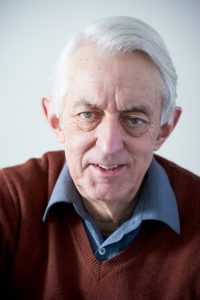Samantha Fletcher is a lecturer in criminology at Manchester Metropolitan University. Much of her research focuses on ‘crime, harm, and global justice’, and she has a particular interest in ‘new social movements that seek to challenge global inequalities and injustice’. Continue reading Crime, harm and the question of justice: an interview with Samantha Fletcher
A climate emergency action plan: an interview with Paul Allen of the Centre for Alternative Technology
‘That which is hateful to you, do not do to your fellow’: an interview with Arthur Goodman
Arthur Goodman is the Parliamentary and Diplomatic Liaison Officer of the organisation Jews for Justice for Palestinians. We asked him about JJP’s work and what inspires it. Continue reading ‘That which is hateful to you, do not do to your fellow’: an interview with Arthur Goodman
Improvising the commons: lessons from la ZAD
Artist and activist James Brady will be delivering the Commonweal Lecture for 2018 – Commonweal’s 60th anniversary. His topic will be la ZAD, a bold experiment in common living in rural France. We asked him to tell us about la ZAD and why it deserves us our attention right now. Continue reading Improvising the commons: lessons from la ZAD
Hope dies, action begins: an interview with RisingUp’s Gail Bradbrook
RisingUp is an activist collective that’s seeding widespread action against ‘our ecocidal, unjust and corrupt system’ and inviting us all to explore and implement the alternatives. We spoke to RisingUp’s Gail Bradbrook, one of the organisation’s founders. Continue reading Hope dies, action begins: an interview with RisingUp’s Gail Bradbrook
A new story for the 21st century: an interview with Michael Nagler
Michael Nagler is the founder and president of the Metta Center for Nonviolence, in Petaluma, California, which offers ‘Theory, Strategy, Support for a New Story’. We asked Michael about the work of the Center and his own perspective on nonviolence. Continue reading A new story for the 21st century: an interview with Michael Nagler
How can we live without war? An interview with Greta Zarro
Greta Zarro is Organizing Director at World BEYOND War, which works globally to counter the myth that war is unavoidable and to bring about a war-free world. Continue reading How can we live without war? An interview with Greta Zarro
If the Anthropocene is violence, what is nonviolence? An interview with Mark Goldthorpe
Mark Goldthorpe runs the ClimateCultures project, which showcases ‘contributions by artists, curators or researchers working on many aspects of environmental or climate change’. Its strapline is ‘Creative conversations for the Anthropocene’ (the era when human influence dominates climate and environment), and we took the direct approach by starting a conversation with Mark himself about climate, culture, violence and imagination… Continue reading If the Anthropocene is violence, what is nonviolence? An interview with Mark Goldthorpe
Art, activism and the nuclear sea: an interview with Wallace Heim
‘the sea cannot be depleted‘ is an online artwork that uses sound and spoken word to call attention to the Solway Firth. Continue reading Art, activism and the nuclear sea: an interview with Wallace Heim
Event: Are We Over ISIS? A talk by Commonweal Trustee Paul Rogers

Paul Rogers
Commonweal trustee Paul Rogers will feature at a Bradford Literature Festival event on 7th July 2018: Are We Over ISIS?:
Rewind one year and the headlines were all about the war with ISIS and the threat it posed to western society. Now, it has almost disappeared from daily news – does this mean that ISIS itself has gone away?
Continue reading Event: Are We Over ISIS? A talk by Commonweal Trustee Paul Rogers